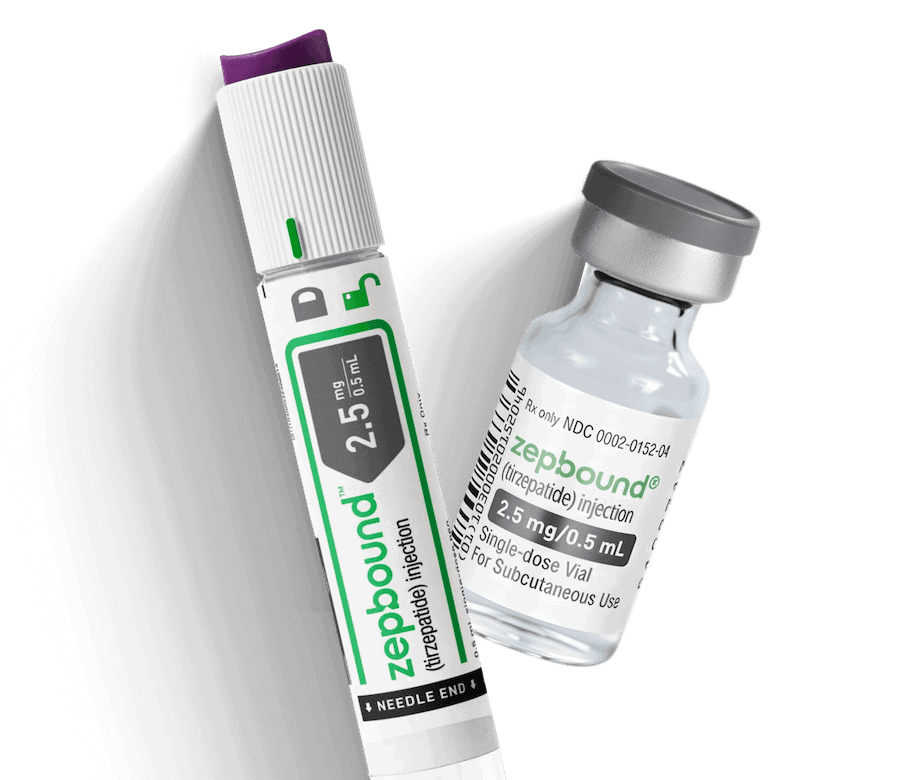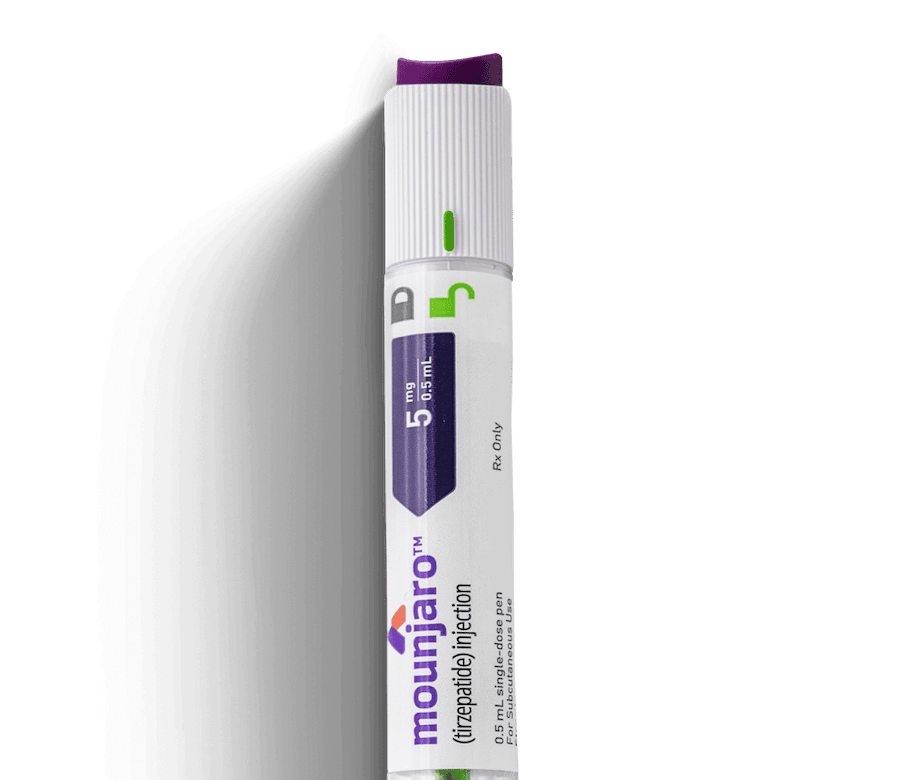What you’ll learn:
- Metformin can support modest weight loss, especially in people with insulin resistance, but finding the right dose takes time, patience, and medical guidance.
- Starting with a low dose and gradually increasing helps your body adjust and reduces common side effects like nausea or stomach upset.
- Whether you’re taking immediate-release or extended-release metformin, consistency and working closely with your provider are key to reaching your weight loss goals safely.
Metformin is one of the most commonly prescribed medications for managing type 2 diabetes, but it’s also gaining attention for another reason: weight loss. Like Ozempic® or Mounjaro®, metformin is FDA-approved to treat type 2 diabetes but can also be prescribed off-label to support weight loss. And while it works differently than GLP-1 medications—it doesn’t mimic hormones—it can still help reduce appetite and cravings, especially in people with insulin resistance or other metabolic conditions.
Weight loss with metformin depends a lot on finding the right dose for your body, and getting there takes time. Metformin is taken in pill form, usually once or twice a day, and people start on a low dose that’s gradually increased. This controlled increase, or titration, helps your body adjust and minimizes side effects like nausea or upset stomach, which are more common when the dose increases too quickly.
Rx weight-loss, the right way, with Noom
Get access to prescription weight loss medication with Noom.We’ll walk through how dosing typically works, what signs to look for that your dose is working (or not), and how to talk with your doctor about adjustments so you can feel more in control of your progress and your plan.
How metformin dosing works
Metformin is prescribed to treat diabetes or to support weight management, especially in people with insulin resistance or polycystic ovary syndrome (PCOS). While the dose approach is similar for both uses, your dose will depend on the type you use, how your body responds, and your overall health goals.
Sign up for Noom Digest!
Stay on top of your wellness journey with the latest Noom news, thoughtful articles, and a healthy dose of inspiration delivered right to your inbox.Types of metformin: Immediate-release vs. extended-release
Metformin comes in two main forms: immediate-release (IR) and extended-release (ER or XR). Both contain the same active ingredient and are equally effective in managing blood sugar and supporting weight management. The key difference lies in how the medication is absorbed in your body.
- Immediate-release (IR) metformin is taken twice daily with meals. For some people, it is more likely to cause digestive side effects like nausea or bloating.
- Extended-release (ER/XR) versions are designed to be taken once daily, often with dinner. These may be easier on the stomach for some people.
The choice between IR and ER metformin depends on your tolerance, lifestyle, and medical history. Usually, people start with IR and switch to ER if they have any issues.
How to take metformin: Typical dosage guidelines
Metformin is taken orally as a pill either once per day or multiple times per day, depending on the form you’re prescribed, and it’s typically taken with meals.
| Category | Immediate-release (IR) metformin | Extended-release (ER) metformin | |
|---|---|---|---|
| Starting dose | Start at 500 mg twice daily or 850 mg once daily | 500 mg once daily with the evening meal | |
| Dose escalation | The dose may be increased by 500 mg each week as tolerated. | Similar increase by 500 mg each week as tolerated. | |
| Maintenance dose | Most people take between 500–2,550 mg per day, split into two or three doses. | Maintenance dose is typically 500–2,000 mg once daily. | |
| Maximum dose | Up to 2,550 mg per day, | Up to 2,000 mg per day, | |
Note: Always follow your provider’s guidance. Do not adjust your dose on your own.
Optimal dose for weight loss vs. diabetes
Whether you are taking metformin for diabetes or weight loss, your doctor will follow a similar approach, starting at the lowest level and increasing as needed and tolerated. The optimal dose will depend on how your body is responding and whether side effects are controlled and manageable.
If you’re managing type 2 diabetes, most people start with 500 mg twice a day, then increase as needed, depending on how their body responds and how well their blood sugar is being controlled.
If you’re taking metformin for weight loss, your provider will likely follow a similar approach, paying attention to weight loss instead of blood sugar control.
How much weight can I expect to lose?
Metformin works best when paired with good nutrition, regular movement, and other habit changes. In the Diabetes Prevention Program study, people who focused on healthy habits and made lifestyle changes lost more weight than people who just took metformin. Let’s take a look at how much weight people lose taking metformin over time:
- 3 months: 1 to 2% of body weight.
- 6 months: 5% of body weight.
- 1 year +: 5 to 6% of their body weight.
Your provider will help you find the right dose based on your needs, goals, and how your body responds.
How to take metformin
When taking metformin, consistency and timing matter. While the medication itself can support appetite regulation and insulin sensitivity, how and when you take it can influence how well your body tolerates it and how effectively it works over time.
| Action | Details |
|---|---|
| When and how to take it | Most people take metformin once or twice a day, depending on the type. Immediate-release tablets are usually taken twice daily with meals (e.g., breakfast and dinner). Extended-release tablets are taken once daily, typically with the evening meal. |
| How to minimize side effects | Take it with food. Metformin should always be taken with meals to reduce digestive side effects such as nausea, cramping, or diarrhea. Be consistent. Taking metformin at the same time each day helps stabilize blood levels and supports long-term effectiveness. Linking it to daily habits can help you stay consistent. Hydrate. Swallow your dose with a full glass of water to improve absorption and reduce gastrointestinal discomfort. |
Metformin: Dosage adjustments and personalization
Your healthcare provider will adjust your dose based on how your body responds, how well you’re tolerating the medication, and whether it’s helping you reach your health goals.
Here are a few common reasons your dose might be adjusted:
- Your blood sugar or weight loss goals aren’t being met.
If you’re taking metformin for type 2 diabetes and your blood sugar levels aren’t improving, your provider may increase your dose gradually. If you’re using it off-label for weight loss, adjustments might be made to support better appetite control or help break through a plateau. - You’re dealing with side effects.
Digestive issues like nausea, bloating, or diarrhea are common when starting metformin. If these symptoms stick around, your provider might slow down the dose increases, lower your current dose, or switch you to an extended-release (ER) version, which can be easier on the stomach. - There’s been a change in your health.
Shifts in kidney function, new medications, or other health conditions can affect how your body handles metformin. Your provider may adjust your dose to keep things safe and effective.
If something feels off—whether it’s lingering side effects or a lack of progress—don’t change your dose on your own. A quick check-in with your provider can help fine-tune your treatment and make sure metformin is still working for you. Personalized dosing helps maximize the benefits while minimizing side effects, no matter your goal.
What happens if you miss a dose?
We all have those moments when life gets busy. If you’ve missed a dose of metformin, here’s how to get back on track—whether you’re taking the immediate-release (IR) or extended-release (ER) version.
If you’re taking immediate-release (IR) metformin
- Take the missed dose as soon as you remember, unless it’s almost time for your next one.
- If it’s close to your next scheduled dose, skip the missed one—don’t double up. Taking too much at once can lead to stomach upset or low blood sugar (if you’re also taking other diabetes medications).
- Keep doses evenly spaced throughout the day to help the medication work more consistently.
If you’re taking extended-release (ER) metformin
(ER metformin is usually taken once a day, often in the evening)
- If you remember within a few hours of your usual time, go ahead and take it.
- If it’s already the next day or close to your next dose, skip the missed one and continue with your regular schedule.
- Taking ER metformin too close together may increase the risk of side effects, especially stomach issues.
Whether you’re using metformin for diabetes management or off-label for weight loss, missing a single dose isn’t usually a cause for concern. Just don’t make a habit of it—consistency is key to seeing results. If you’re missing doses often, chat with your provider about ways to make your routine easier to follow.
When should you reach out to your healthcare provider about missed doses?
If you find yourself forgetting to take metformin more often than you’d like, it’s worth reaching out to your healthcare provider. They can help you figure out what’s getting in the way and suggest strategies that fit your routine—or even adjust your dosing schedule to make it easier to stay consistent.
Sticking to your metformin schedule matters. Taking it regularly helps keep your blood sugar levels steady and supports your long-term health, whether you’re using it to manage diabetes or support weight loss. When doses are missed often, blood sugar can fluctuate, which may lead to complications over time.
Metformin: Side effects and warnings as dose increases
Because metformin changes the way your body processes and uses insulin, it can cause some common side effects. These are more likely when first starting the medication or when your dose is increased. Here’s what might happen, along with some serious side effects and warnings that you should be aware of before starting the medication.
Common side effects of metformin
- Nausea
- Diarrhea
- Stomach pain
- Loss of appetite
- Metallic taste in the mouth
Serious side effects and warnings:
Although it’s uncommon, metformin can sometimes cause serious side effects that require immediate medical attention. Here’s what to look out for:
- Lactic acidosis: This rare but dangerous condition happens when too much lactic acid builds up in the body. Signs include muscle pain, extreme fatigue, trouble breathing, dizziness, stomach pain, or an irregular heartbeat. People with kidney, liver, or heart problems—or those who drink heavily—are more at risk.
- Kidney issues: Watch for signs like swelling, feeling unusually tired, changes in how often you urinate, or shortness of breath.
- Allergic reactions: These are rare, but they can be serious. If you experience things like swelling, trouble breathing, or a rash, seek emergency care right away.
Other issues to watch out for:
- Vitamin B12 deficiency: Taking metformin long-term can lower your Vitamin B12 levels, which might leave you feeling tired or weak. You could also notice numbness or tingling in your hands and feet. Talk to your clinician if something doesn’t feel right.
- Low blood sugar (hypoglycemia): When combined with insulin or certain diabetes medications, metformin can sometimes cause low blood sugar. Look out for dizziness, sweating, shaking, blurred vision, or a racing heartbeat. Your doctor may adjust your other medications to help prevent this.
Learn more about safe and effective metformin use at Noom’s official safety page.
Metformin: Overdose risks and symptoms
Taking metformin as prescribed is generally safe, but it’s helpful to know the signs that might indicate you’ve taken too much. Here’s what to look out for if you’re worried you’ve accidentally taken too much or overlapped on doses:
Common overdose symptoms may include:
- Extreme tiredness or drowsiness
- Nausea, vomiting, or stomach pain
- Rapid or shallow breathing
- Muscle weakness
- Dizziness or lightheadedness
- Confusion or trouble concentrating
- Unusual sleepiness or difficulty staying awake
In rare but serious cases, taking too much metformin can lead to lactic acidosis, which is a medical emergency. It happens when too much lactic acid builds up in the blood and your body can’t clear it fast enough.
Warning signs of lactic acidosis include:
- Trouble breathing
- Cold or blue hands and feet
- Slow or irregular heartbeat
- Unexplained fatigue or weakness
- Stomach pain with nausea or vomiting that won’t go away
If you think you may have taken too much metformin or are experiencing any of these symptoms, seek medical attention immediately. Call your healthcare provider, contact the Poison Help Line at 1-800-222-1222, or go to the nearest emergency room.
When in doubt, it’s always safer to get checked out. And if you’re ever unsure about a dose or missed medication, your pharmacist or doctor can help guide you safely. Metformin-related issues can sometimes develop quickly, so trust your instincts if you feel something’s off.
Who shouldn’t take metformin
Metformin works well for many people, but it’s not the right choice for everyone. Certain health conditions can make it risky or less effective, so it’s important to share your full medical history with your doctor before getting started.
You shouldn’t take metformin if you:
- Have serious kidney problems, or your kidneys aren’t working well
- Have liver disease
- Have recently had heart failure or a heart attack
- Have ever had lactic acidosis, especially if it was linked to metformin
- Are dehydrated or dealing with ongoing vomiting or diarrhea
- Are scheduled for a medical test or procedure that uses contrast dye (like a CT scan)—you may need to pause your dose for a short time
Also, make sure to let your provider know if you:
- Drink alcohol often or in large amounts—this can raise your risk of side effects
- Are pregnant or breastfeeding—metformin might still be an option, but only with close monitoring
- Take other medications that affect your kidneys or liver
The bottom line? Metformin can be a great tool, but it’s not one-size-fits-all. Your provider will help you decide if it’s a safe and smart fit for you.
Your next steps with metformin
Finding your ideal metformin dose takes time and careful adjustment. Everyone starts with a low dose, which is gradually increased based on how well their body tolerates the medication and how effectively it manages blood sugar or supports weight-related goals. This step-by-step approach helps reduce side effects while working toward the right therapeutic level.
Keep in mind that metformin works best when it’s part of a broader health plan. Eating balanced meals, staying active, and tracking your symptoms can help your provider make informed decisions about your dose. Consistency is key—taking metformin at the same time each day and following your provider’s instructions will help you get the most benefit. See if you qualify for Noom Med. If you do, you’ll be connected with a clinician who can determine whether metformin for weight loss is right for you and prescribe it if needed.
If you’re not seeing results or experiencing side effects, don’t adjust your dose on your own. Talk to your healthcare provider. They can review your response, check labs if needed, and make the right changes to keep you on track.
Note: Metformin is not FDA-approved to treat obesity or for weight loss.
Why you can trust us
At Noom, we’re committed to providing health information that’s grounded in reliable science and expert review. Our content is created with the support of qualified professionals and based on well-established research from trusted medical and scientific organizations. Learn more about the experts behind our content on our Health Expert Team page.











